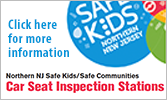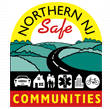Sports Injury Prevention - Concussion it is a hot topic!
There are many myths surrounding concussions and youth sports
Over the last few months, we have had numerous local news stories and television news segments on concussions and youth sports. There are many myths surrounding these discussions.
One thing for sure, you cannot take a concussion lightly. It is a traumatic brain injury. Prevention is the best mechanism to prevent a concussion. If you suspect that an individual has sustained a concussion seek medical attention to assure a prompt diagnosis and treatment plan. The Atlantic Health Neuroscience Institute Concussion Center can assist you in a treatment plan.
To reduce the chances of sustaining a traumatic brain injury or concussion patients should be advised to:
- Wear a seat belt every time they drive or ride in a motor vehicle.
- Buckle their child in the car using a child safety seat, booster seat, or seat belt
- Never driving while under the influence of alcohol or drugs.
- Wear a helmet and make sure their children wear helmets when:
- Riding a bike, motorcycle, snowmobile, scooter, or all-terrain vehicle;
- Playing a contact sport, such as football, ice hockey, or boxing;
- Using in-line skates or riding a skateboard;
- Batting and running bases in baseball or softball;
- Riding a horse; or
- Skiing or snowboarding.
- Ensure that during athletic games and practices that they themselves and their children:
- Use the right protective equipment;
- Follow the rules for safety and the rules of the sport;
- Practice good sportsmanship; and
- Do not return to play with a known or suspected concussion until they have been evaluated by an appropriate health care professional and given permission to return to play. (For more information, refer to the palm card included in the tool kit.)
- Maintain a regular physical activity program, if their health care provider agrees, to improve lower body strength and balance.
- Make living areas safer for seniors, by:
- Removing tripping hazards such as throw rugs and clutter in walkways;
- Using nonslip mats in the bathtub and on shower floors;
- Installing grab bars next to the toilet and in the tub or shower;
- Installing handrails on both sides of stairways; and
- Improving lighting throughout the home.
- Make living areas safer for children, by:
- Installing window guards to keep young children from falling out of open windows; and
- Using safety gates at the top and bottom of stairs when young children are around.
Make sure the surface on their child's playground is made of shock-absorbing material, such as hardwood mulch or sand.
KJ Feury RN APN, C
karenjean.feury@atlantichealth.org
Phone: 973-971-4327
Fax: 973-290-7350




